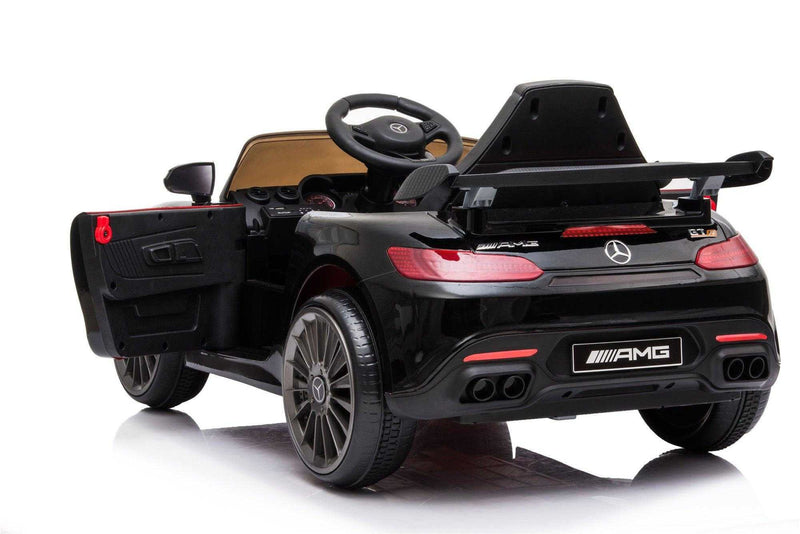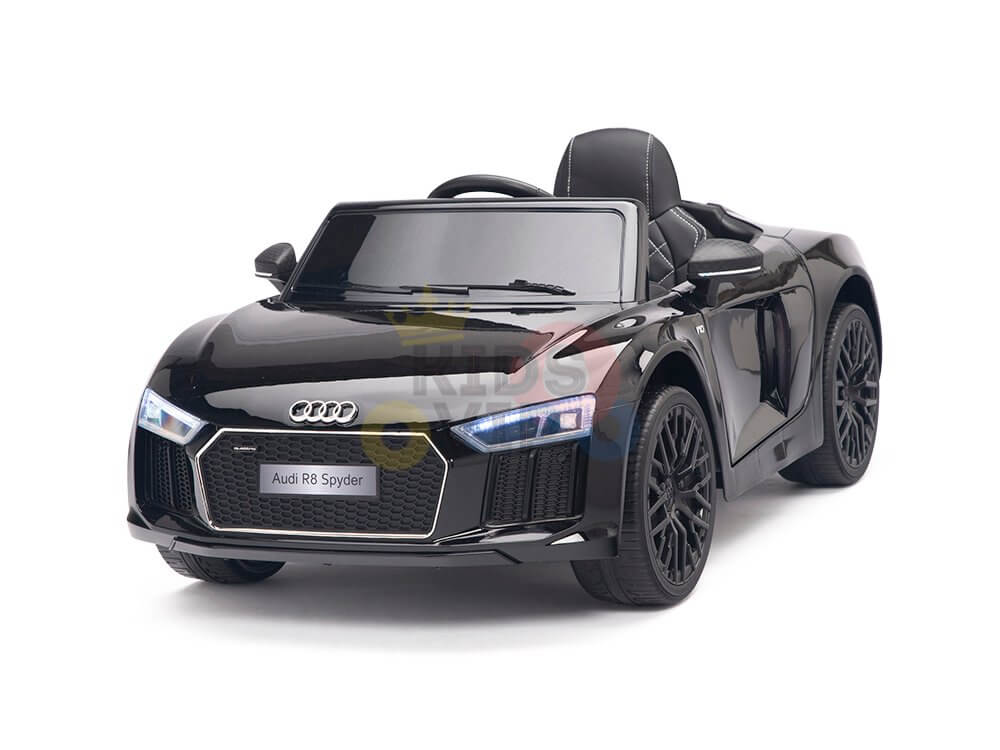What Should I Know About The Battery Life And Charging Times Of An Electric Kids Ride-On Car?
Understanding the battery and charging time of a kid's electric ride-on vehicle is crucial for ensuring maximum performance and continuous playtime. Here's the information you need to know: Type of Battery
The majority of electric ride-on vehicles for kids utilize rechargeable batteries, which are typically lithium-ion or lead acid batteries. The lead-acid batteries take longer time to charge and have a lower battery lifespan.
Capacity of Battery -
The battery capacity is expressed in amp hours (Ah) and Watt hours (Wh). This determines the amount of time the ride-on will last on one charge. The capacity of the battery is crucial since it determines the length of time the ride-on vehicle can run before charging.
Run Time -
The time of a car's runtime is how long the vehicle can run continuously on only one charge of battery. This can be affected by factors such as the battery's capacity, the power of the motor, terrain or the weight of a driver.
For electric vehicles typically, the run time is between 30 and 2 hours with one battery charge. However, some high-capacity batteries might have longer time-to-run.
Charge time -
The time for charging is the time taken to recharge the battery completely after depletion. The charging time can differ based on the battery capacity, charger specifications and the charging methods.
The charging time for electric ride-on vehicles vary from 8 to 12 hours for a full charge. However, certain models have faster charging times, particularly when using lithium-ion batteries.
The battery's safety and lifespan can be assured by adhering to the manufacturer's charging recommendations. Battery performance could be adversely affected if the battery is overcharged or undercharged.
Method of Charging
Electric ride-on vehicles are usually equipped with a charging station that connects to a standard home outlet. Some models may offer quick charging or even a smart charger that tracks the battery's status of charge and adjusts charging rates according to the condition of the battery.
Ensure that the charger connector and port can be used with the charger provided with the ride-on car to prevent damage to the battery or the electrical system.
Batteries for Other Use -
Certain electric ride-on vehicles may allow you to purchase additional batteries or spare batteries for extended playing time. Additional batteries let you recharge batteries that are depleted by fully charged batteries, which can reduce downtime.
Knowing the battery life of your electronic kids' ride-on vehicle and its charging time will allow you to ensure that your child has fun and exciting adventures while exploring their environment. Continuously charging the battery, and following the correct charging procedures will help increase the battery's life and performance. Have a look at the best Lamborghini ride on car for site advice including two seater electric cars, ride on digger, childrens ride on, pedal car, 2 seater electric cars, electric ride on cars, ride on toy, childrens digger, remote control childrens electric cars, childs electric ride on car and more. .

How Are Kids Car Models Designed For Indoor And Outdoor Use?
The models are designed with specific features and characteristics specific to the particular environment and usage scenario, whether indoors or outside. Here are the differences between these models - Indoor Use Cars
Size and Weight - Cars designed for indoor use tend to be smaller and lighter in weight to move easily in tight spaces such as living rooms, playrooms, or hallways. They are small enough to maneuver around narrow spaces and corners without causing damage to walls or furniture.
Low Ground Clearance Cars that are used indoors have a narrow ground clearance so they don't become stuck or caught by obstacles such as rugs thresholds or carpets. This allows for smooth and free moving over indoor surfaces.
Smooth Wheels The wheels of the inside of cars are made from smooth materials like rubber or plastic. This creates stability and grip on smooth surfaces like hardwood floors, laminate floors, or tiles. They are designed to minimize the sound of the vehicle and to prevent scratching indoor surfaces.
Limited Speed - Indoor usage cars usually are slower to assure safe and controlled operation within restricted spaces. This prevents accidents and collisions with furniture, walls or any other obstacles that are commonly encountered in indoor areas.
Outdoor Use Cars -
Durable Construction – Cars that are designed for outdoor use are constructed with robust materials. They include strong metals or plastics that can stand up to the harsh elements outside, such sunlight, humidity and temperature variations. They are less likely to suffer from tear and wear caused by exposure to outdoor environments.
High Ground Clearance – Outdoor-use cars have a higher ground clearance in order to take on bumps and uneven terrain encountered in the outside. They can also maneuver over rough surfaces such as pavement, gravel or grass without causing damage or getting stuck.
Traction Tires - The tires of vehicles made for outdoor use typically include treads to give better traction or grip on uneven or slick surfaces. This helps ensure stability and control while driving on rough terrain, preventing skidding or sliding.
Weather Resistant: Cars designed for outdoor use often feature weather-resistant features like sealed electronics or casings with waterproof coatings. They could also utilize the rust-resistant materials to avoid damage from water. This allows the car to stand up to rain, mud or puddles and still function well.
High Speed - Outdoor use cars typically have faster maximum speeds to allow for open spaces and longer distances typically encountered in the outdoors. This can provide a thrilling and thrilling riding experience for kids who are exploring the outdoors.
These features and traits will assist parents in choosing the right kids' car to meet their requirements for use and their environment. View the recommended click here on kids cars for more examples including car for toy, toy cars toy car, remote control childrens car, electric two seater cars, childrens electric ride on, electric rideons, toy cars toy car, riding digger, ride a toy, electric car ride and more. .

What Is The Best Remote Control Car To Use With Children? What Are The Advantages And Disadvantages?
Remote control cars for kids are also known as RC or remote-controlled vehicles are available in a variety of styles, sizes and price points. They're designed to fit the needs of different budgets and tastes. Here's a listing of the various types of remote control cars for kids, with the dimensions, cost ranges, and pros and con.
Electric RC Cars – Batterie-powered remote-controlled cars that are suitable both indoors and out. They are available in many designs, including buggies, trucks and sports cars.
Nitro RC Cars – Gas powered remote controlled vehicles that have better performance but require more care. They tend to be larger and more costly than electric RC cars.
Scale Models - Remotely controlled replicas of real-life vehicle models, including cars, trucks, airplanes, and boats. Scale model sizes range between 1-10 and 1--24. Larger models offer greater details and greater realistic.
Sizes -
Remote-controlled cars for kids come in a variety of sizes. From tiny to full-size replicas, they come in all dimensions and shapes. The size of a vehicle can affect the performance of it and its speed.
Micro-sized cars are small and lightweight, making them ideal for indoor use and play by younger children. Larger models provide more power and durability and are ideal for outdoor racing and off-road driving.
Prices
The price of a remote control car for children is dependent on its size of the vehicle, its features, manufacturer and the build quality.
Electric and Nitro RC vehicles at a higher scale cost between $100 and $500.
Models and high-end hobbies RC cars cost from several hundred to more than a 1000 dollars, based on the degree of detail.
Pros and Cons
Pros -
Adults and children will have hours of fun and entertainment by controlling their cars via remotes.
Skills Development. Operating a RC car lets children develop hand-eye coordination, spatial awareness and problem-solving abilities.
Social Interaction. The RC car encourages social interaction and be enjoyed by both friends and family.
Customization - A lot of RC vehicles can be customised with aftermarket parts, upgrades and other accessories to improve the performance and look.
Cons
Costs - Top-quality cars with advanced features, like hobby-grade cars, can be quite expensive.
Learning Curve - Operating an RC car requires practice and expertise, and smaller children may struggle with the controls in the beginning.
Maintenance is essential for car owners who own RC vehicles. They need to clean regularly, lubricate and perform repairs or replace the parts.
Safety Risks RC cars can pose dangers to safety, such as collisions, falls, and electrical hazards, if not used responsibly and under adult supervision.
Remote-controlled cars for kids provide a fascinating educational and fun experience. However, it's essential to pick the correct model based on factors like size, safety, price and features. Hobby-grade RC models are suitable for older children or those who are avid. The simpler models are ideal for children who are just beginning their journey. View the top rated remote control childrens cars kidscars.co.uk recommendations for blog advice including digger ride, car toy toy, childs car toy, ride of car, ride of car, electric ride along car, ride ons, two seater electric cars, ride ons, car on ride and more. .

Comments on “Good Reasons To Selecting Kids Ride On Cars”